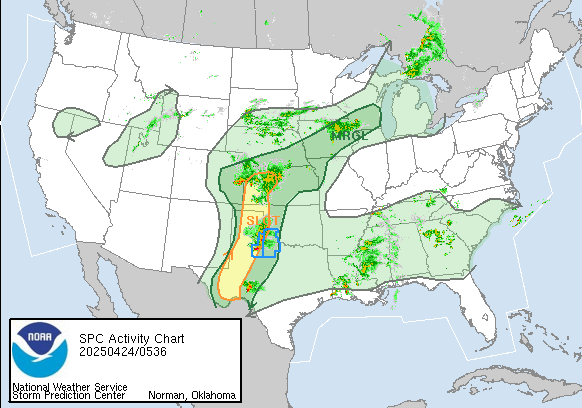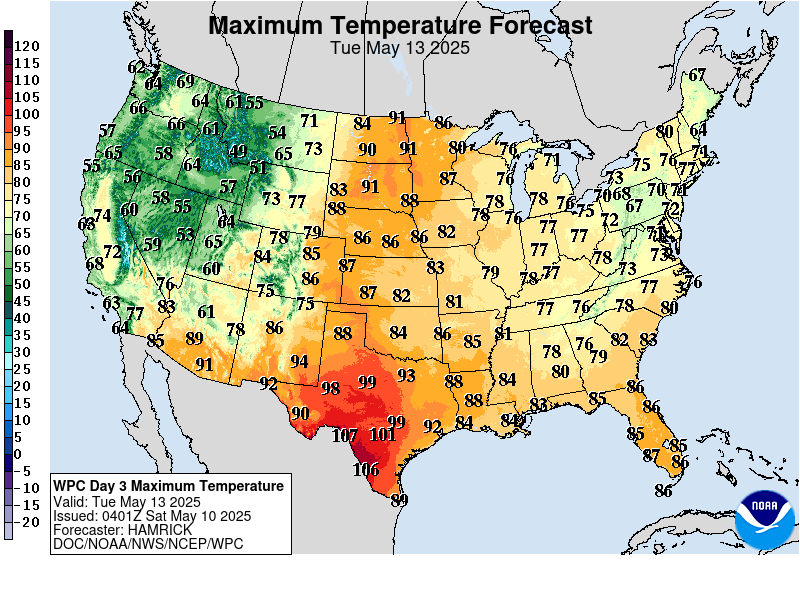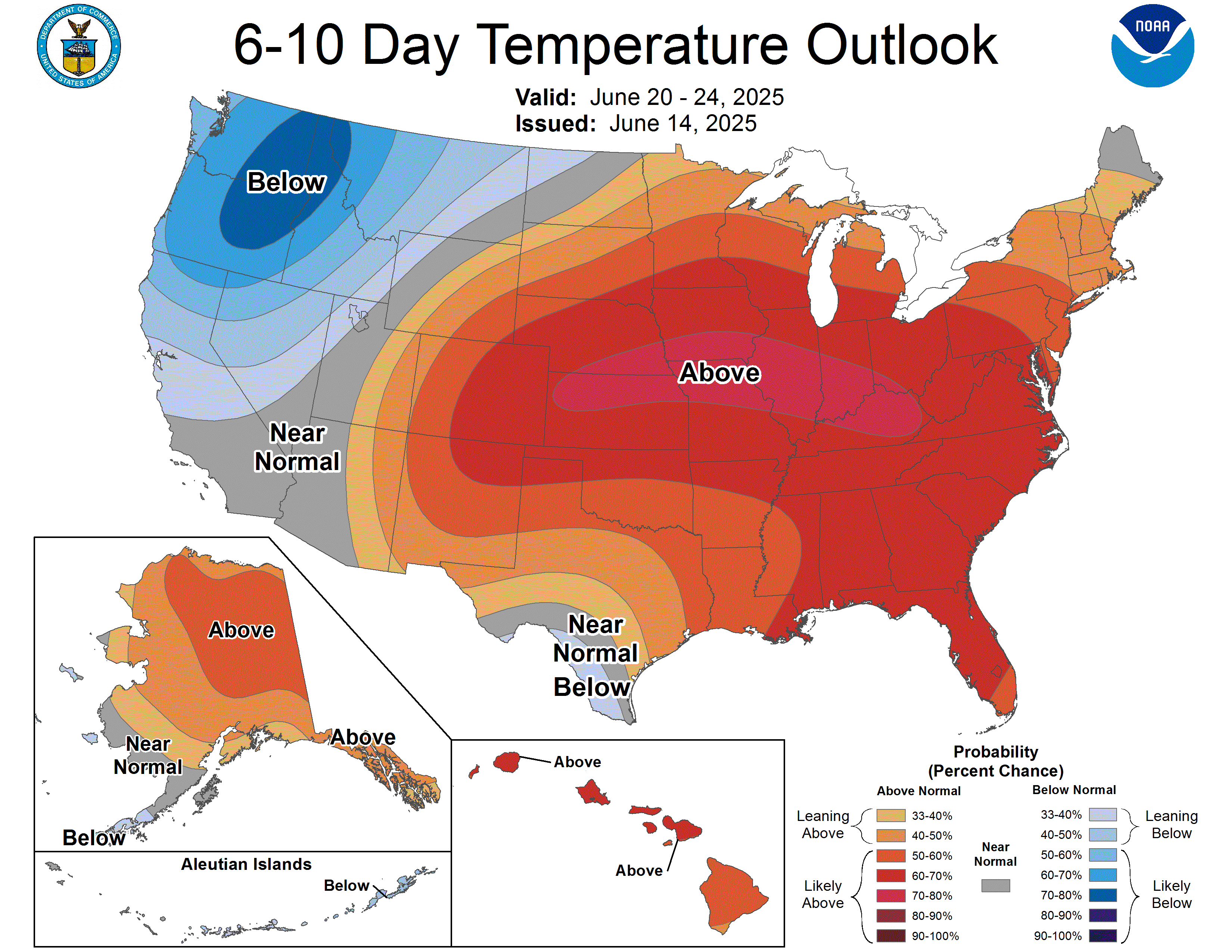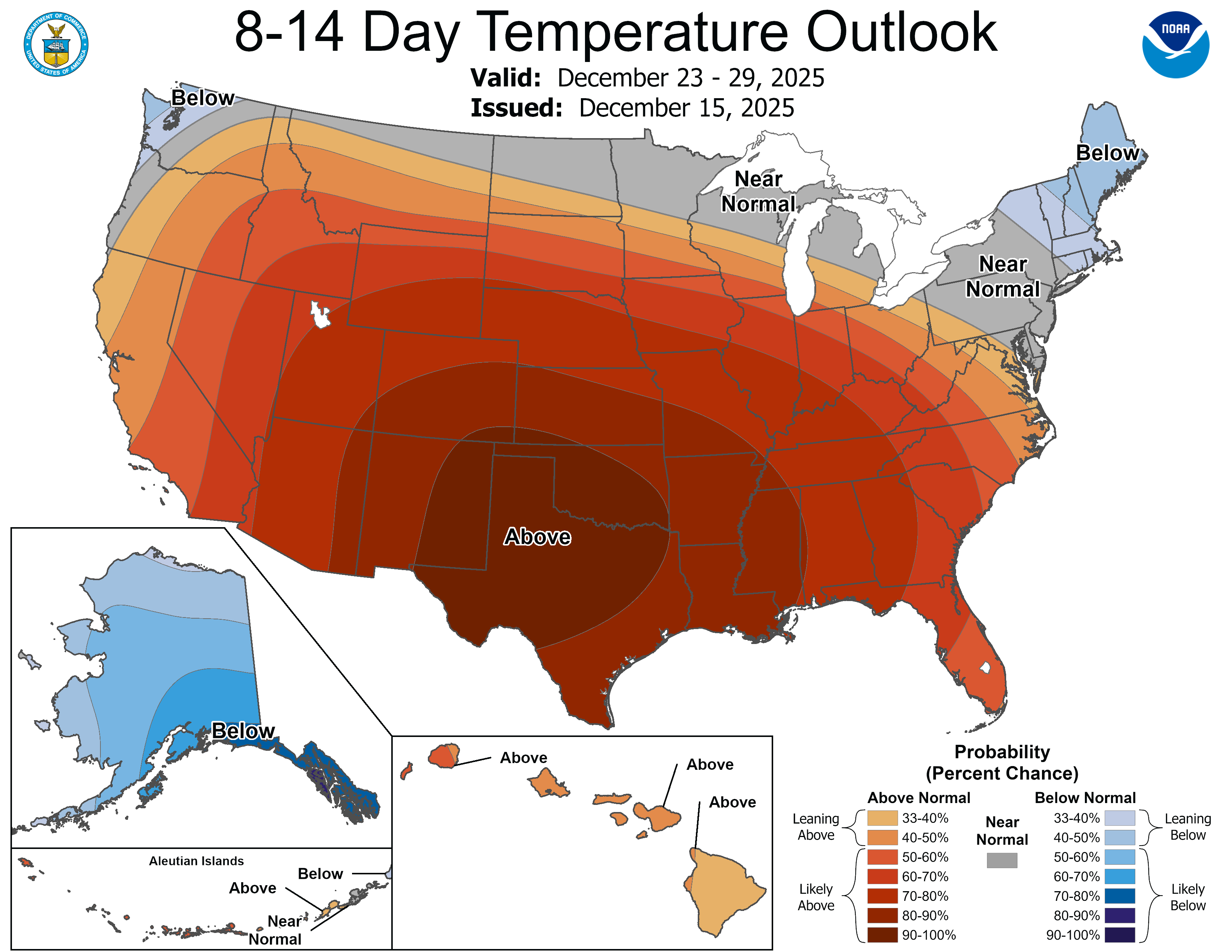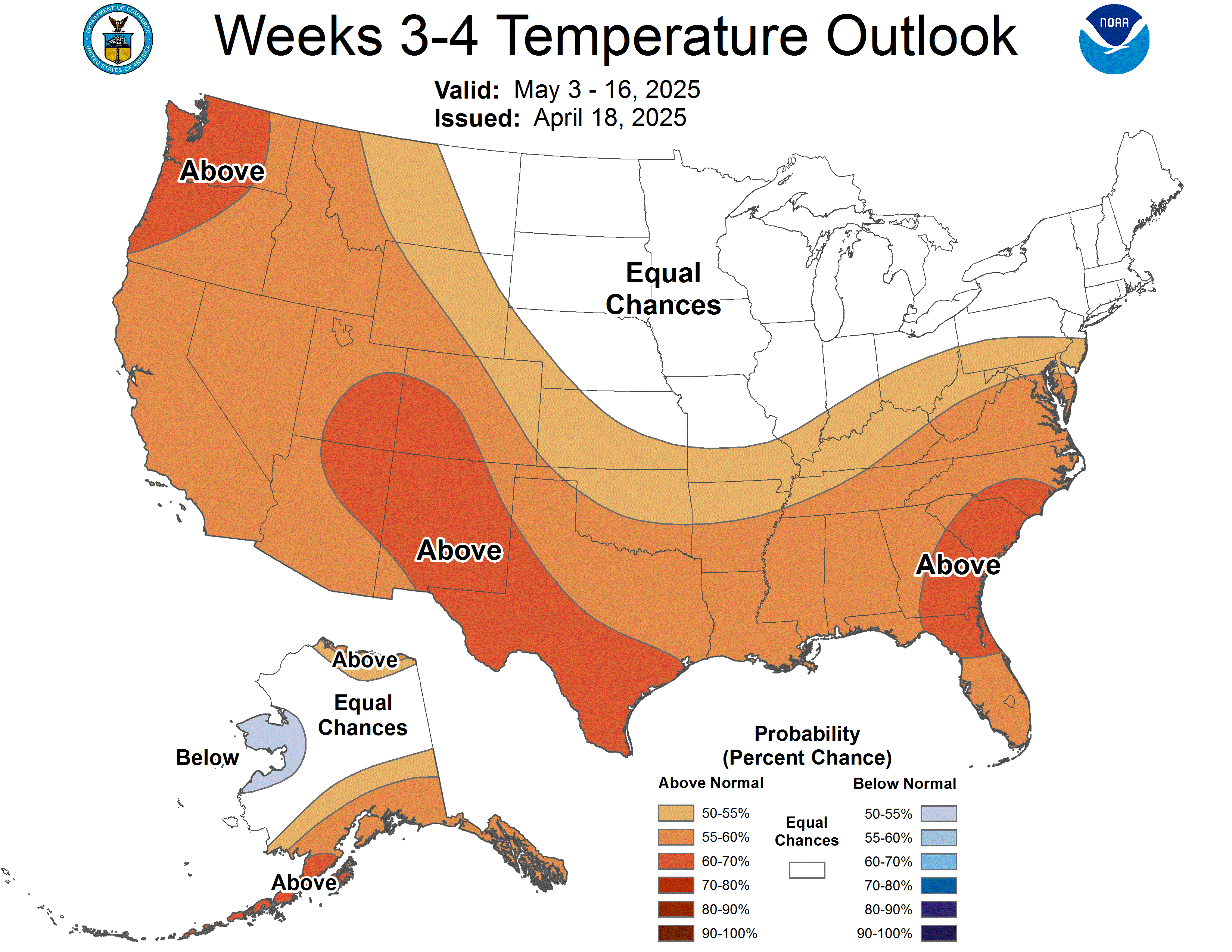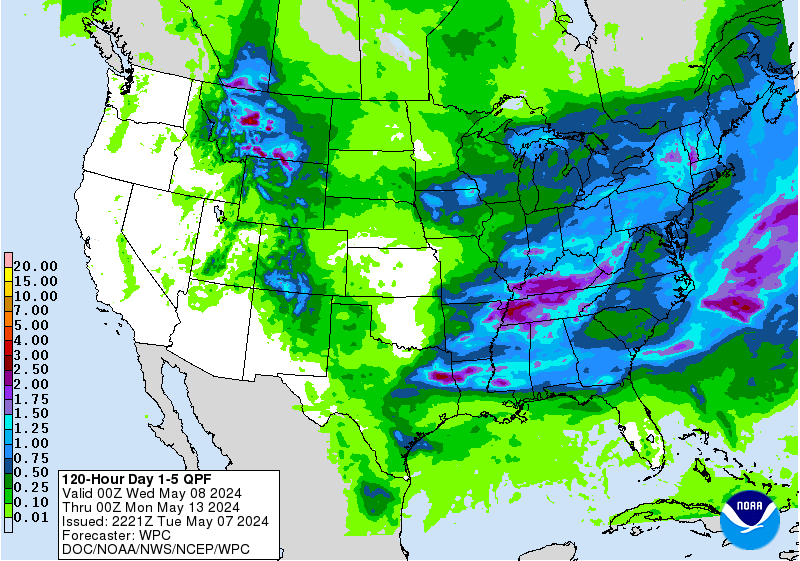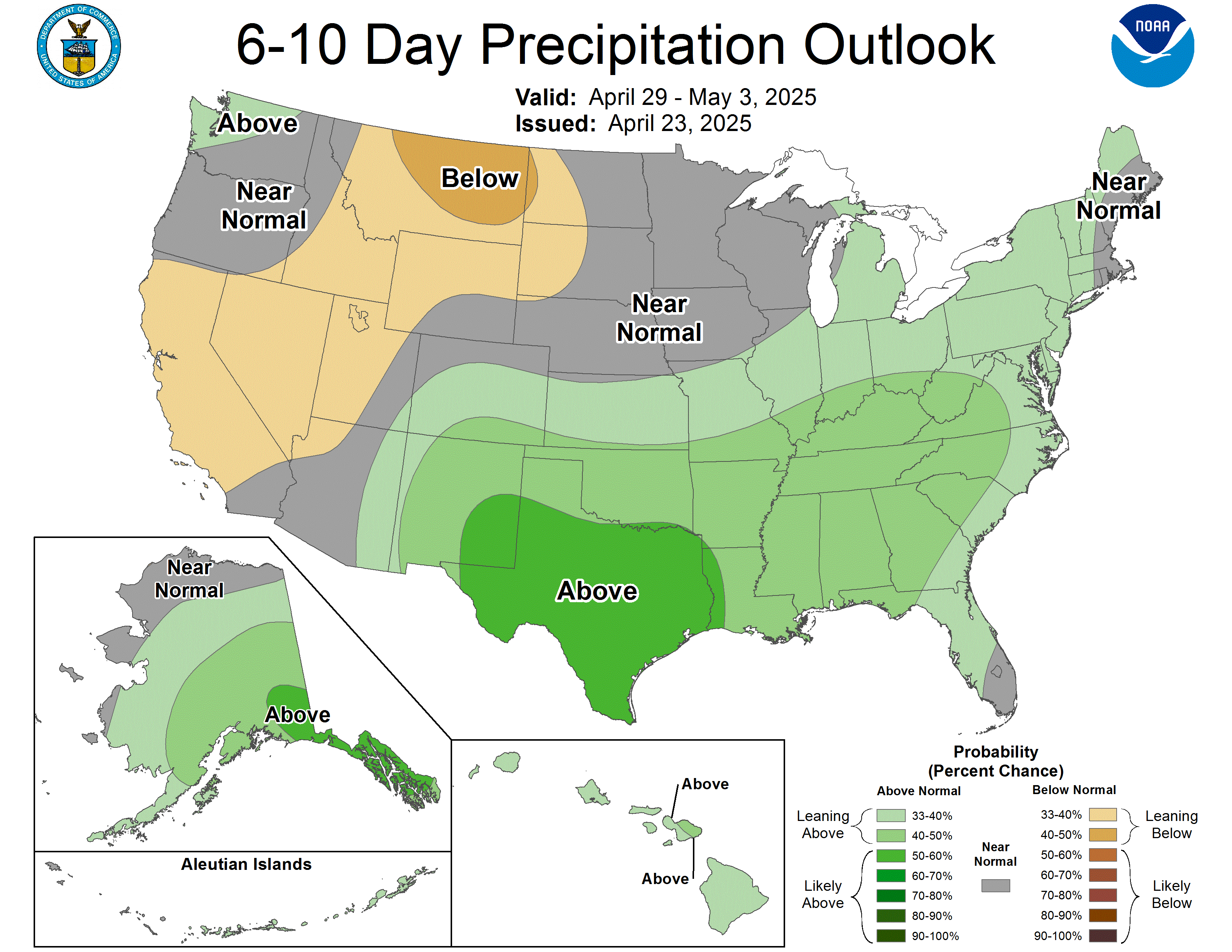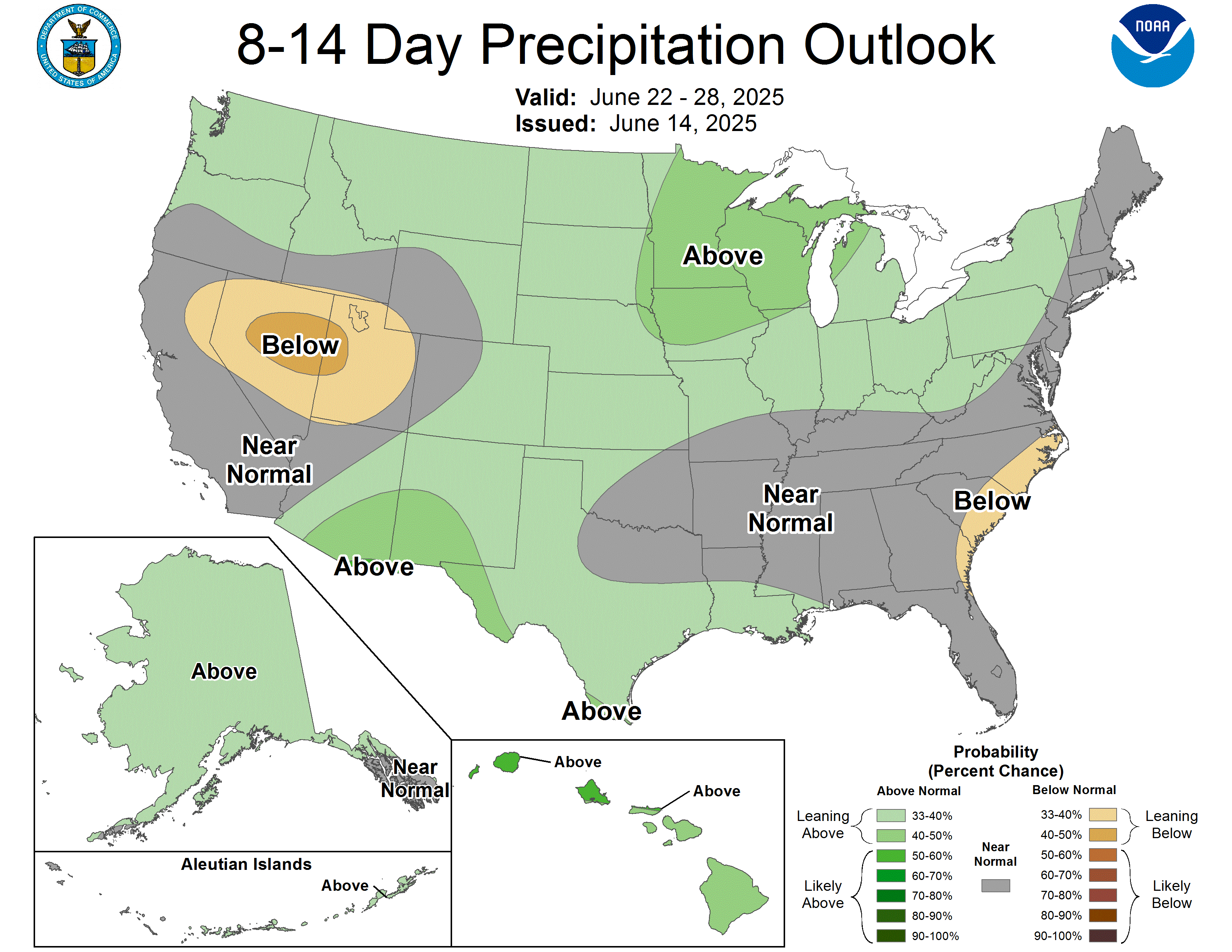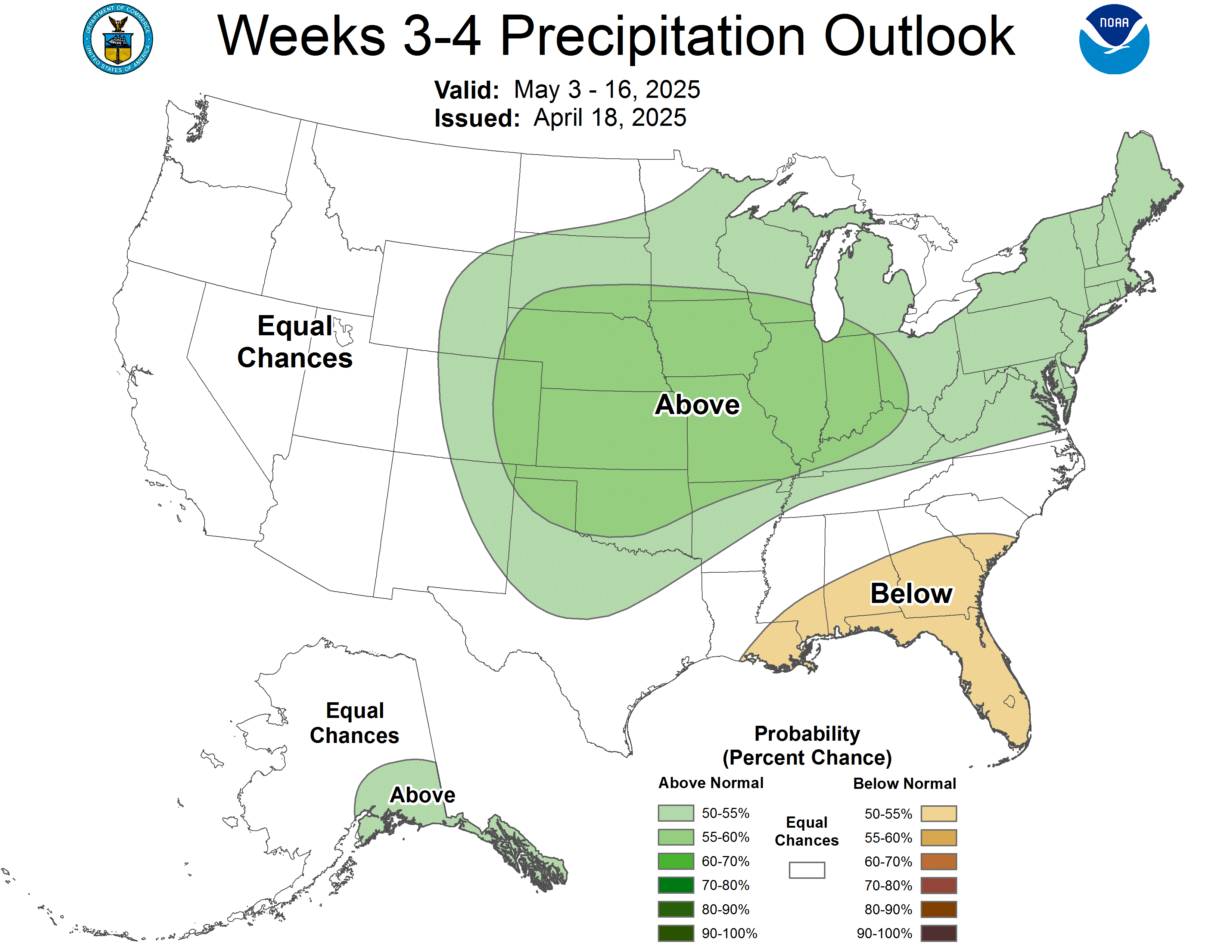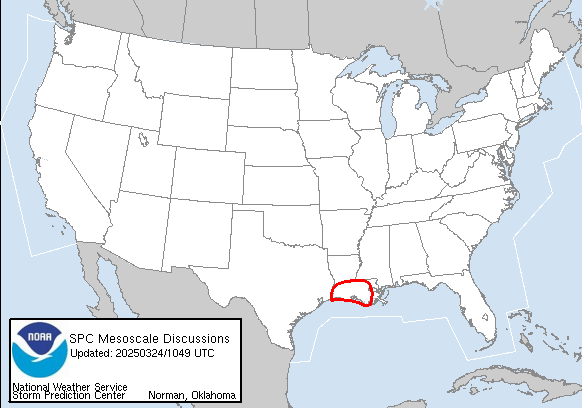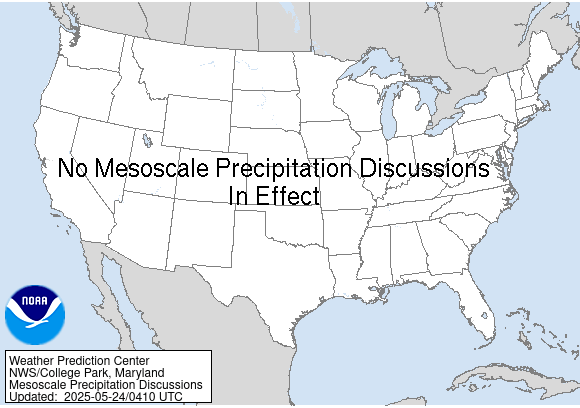Written by Sig Silber
HEADLINES –
“– Widespread record heat continues across the western U.S. as heat moderates over the southern Plains
– A developing low pressure system will bring areas of heavy rain today across the northern Mid-Atlantic before skirting south of Long Island tonight”

This article provides continuous updates for a variety of Weather and Weather-Related Threats as well as a general weather forecast. These are “Live” maps that continually update. Please pay attention to the Mesoscale Events maps — Mesoscale Events are potentially life-threatening situations.
Please share this article – Go to the very top of the page, right-hand side for social media buttons. Also, feel free to send this email to anyone you feel will benefit from it
Readers can scan through this article or jump to where they want to go via the links to the right. To get back to the Directory, hit the back arrow at the top of the URL bar on your screen. But in many cases, one of my Editors has graciously inserted a Return to Directory link to click so that is even easier. This is so high tech that I hardly believe it. |
|
CONUS Focal Points
Short Range Focal Points
Short Range Forecast Discussion NWS Weather Prediction Center College Park MD – 400 AM EDT Sun Aug 16 2020
Valid 12Z Sun Aug 16 2020 – 12Z Tue Aug 18 2020
…Widespread record heat continues across the western U.S. as heat moderates over the southern Plains…
…A developing low pressure system will bring areas of heavy rain today across the northern Mid-Atlantic before skirting south of Long Island tonight…
A strengthening ridge of high pressure aloft will ensure a heat wave to continue across much of the western U.S. for the next few days. Excessive Heat Warnings/Watches and Heat Advisories continue to be in effect just about everywhere in the region except the Sierra Nevada. In fact, record daily high temperatures are forecast for many locations for the next few days as afternoon temperatures surpass the century mark from the interior Pacific Northwest down to the Desert Southwest. The persistent heat and dry conditions will also promote the threat of wildfires across the region. The southern Plains will also see triple-digit temperatures today. But cooler air behind a cold front will drop temperatures by about 10 degrees on Monday. Meanwhile, the heat should culminate today for the interior Pacific Northwest with very slow improvement setting in for the next couple of days.
In the East, a wave of low pressure over the southern Appalachians this afternoon advances east along a stalled frontal boundary towards the Mid-Atlantic coast this evening. Along and north of the the front, heavy downpours embedded within strong thunderstorms could lead to flash flooding in parts of the Mid-Atlantic. A Moderate Risk for flash flooding remains in place across parts of southern Virginia and northern North Carolina with a Slight Risk that extends from the central Appalachians to the North Carolina Outer Banks. Heavy rainfall may last into the day on Sunday as low pressure sits off the DelMarVa coast. Seasonally cool temperatures will also be common from the Carolinas to New England on Sunday thanks to onshore easterly flow. Periods of rain may extend up the Northeast coast Sunday evening and exit out to sea by Monday morning, but an approaching cold front will help to trigger scattered afternoon showers and thunderstorms from the Northeast to the Carolinas Monday afternoon.
In the Nation’s Heartland, severe storms are possible this afternoon and evening in northern Minnesota and the central High Plains. Slight Risks are in place due to the severe weather threat, including a Marginal Risk in the Middle Mississippi Valley. A frontal system responsible for today’s severe weather potential in the Plains is the focal point for initiating showers and thunderstorms from northern Texas to the Midwest on Sunday. The other story in the Heartland is the continuation of cooler than normal temperatures. A slight bump to abnormally warm temperatures on Sunday should occur in parts of the Midwest, but a cold front sweeping across the region will inject yet another surge of below normal temperatures into the Mississippi Valley on Monday that looks to linger the middle of the week.
We try to keep this up to date but if is not you can find the updated version here.
When you click on this image it takes you to the SPC Fire Warning Page and you get a set of maps for Days 1, 2, 3 – 8, etc. You can then click on those for more detailed information. The map is a bit blurry as I tried to make it a bit larger than the map provided by NOAA but should be able to see where the current wildfire risks are. But if you click on this map, you will get to see three maps that show the risk for different time periods.
Thunderstorm Risk
This should play out something like shown in this 60 Hour Forecast Animation
Here is a national animation of weather fronts and precipitation forecasts with four 6-hour projections of the conditions that will apply covering the next 24 hours and a second day of two 12-hour projections the second of which is the forecast for 48 hours out and to the extent it applies for 12 hours, this animation is intended to provide coverage out to 60 hours. Beyond 60 hours, additional maps are available at links provided below. The explanation for the coding used in these maps, i.e. the full legend, can be found here although it includes some symbols that are no longer shown in the graphic because they are implemented by color-coding.
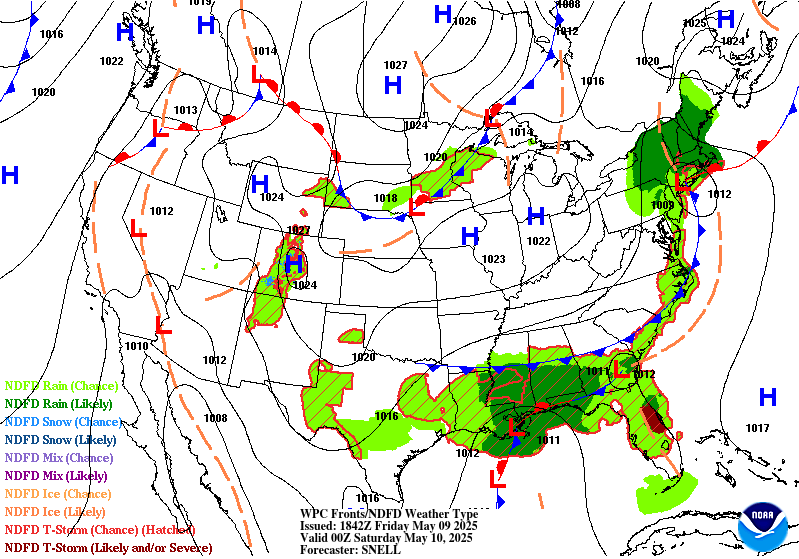
The two maps below break it down by day and may be easier to read.
Now, the Day One and Two CONUS Forecasts: These Maps Update Daily.
Day One CONUS Forecast | Day Two CONUS Forecast |
These graphics update and can be clicked on to enlarge. You can see where the weather will be | |
 | |
During the winter much of our weather originates in the Pacific. That is why we pay attention to the near-term history of storms arriving.
Temperature
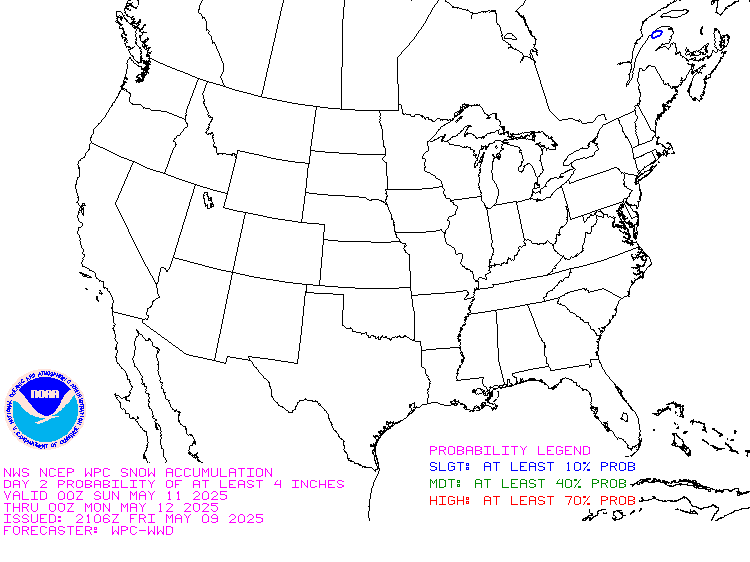
A version that shows a 20 hour animation and some other views can be found here OR SIMPLY CLICK ON THE IMAGE.
– Return to Directory
Day 3 – 7 Hazards
Hazards:
– Heavy rain across portions of the Southeast, the Mid-Atlantic, and the Southern Appalachians, Tue-Wed, Aug 18-Aug 19.
– Heavy rain across portions of the Southeast, Thu-Fri, Aug 20-Aug 21.
– Flooding possible across portions of the Upper Mississippi Valley and the Northern Plains.
– Excessive heat across portions of the Pacific Northwest, the Northern Rockies, the Northern Great Basin, and the Northern Plains, Mon-Tue, Aug 17-Aug 18.
– Excessive heat across portions of California, the Central Great Basin, the Pacific Northwest, the Northern Rockies, and the Northern Great Basin, Mon-Wed, Aug 17-Aug 19.
– Excessive heat across portions of the Central Great Basin, California, and the Southwest, Mon-Thu, Aug 17-Aug 20.
– Much above normal temperatures across portions of the Central Rockies and the Central Great Basin, Mon-Thu, Aug 17-Aug 20.
Detailed Summary:
The dominant weather hazard during the medium range period (Mon, Aug. 17 – Fri, Aug. 21) is the ongoing heat wave across the western third of the CONUS. Excessively hot conditions look to persist across the Southwest and into the San Joaquin and Sacramento Valleys much of, if not all, of next week. The interior Northwest should be excessively hot temperatures the first half of the week before less intense, albeit still abnormally warm, temperatures the latter half of the period. Portions of the Great Basin and Intermountain West can also expect sizzling temperatures through mid-week. Temperatures may become a tad cooler as monsoonal flow returns to parts of the southern and central Rockies. That said, the presence of the upper ridge will keep abnormally hot conditions in the forecast. Due to the ongoing severe drought conditions and lack of rich moisture aloft, dry thunderstorms are likely to transpire across the Southwest and Rockies, which combined with a potentially breezier wind pattern aloft could lead to increased fire weather potential across these regions.
Precipitation-wise, the presence of an upper trough over the east-central U.S. favors wetter than normal conditions over the Southeast mid-late week. The trough may become cut-off from the mean flow over southeast Canada and a stationary front is forecast to set up from the Carolinas to the Gulf Coast. This boundary should become the focal point for precipitation with rainfall rates that could become excessive in localized areas. If a more organized wave of low pressure develop along the Gulf Coast the second half of next week, then there could be a more pronounced area for heavy rainfall in the Southeast or along the Gulf Coast late next week. Where the heaviest rainfall amounts sets up more than likely come down to mesoscale features which this far out is difficult to nail down. We will also be monitoring a cold front swinging through the Upper Mississippi Valley that could lead to rounds of heavy showers and thunderstorms, but there remains uncertainty in both precipitation totals and areas most affected.
In Alaska, a series of low pressure systems look to swing through the Gulf of Alaska both to start the period and into late next week. Model guidance does indicate perhaps some of the highest elevations of the Panhandle could receive rainfall amounts that could approach heavy rainfall criteria, but this Monday will be on the back-end of the heaviest rainfall occurring on Sunday, and ensemble guidance still shows considerable spread in rainfall totals in days 5-7. Still, the pattern stays quite wet in an area where the summer has been quite wet. Rivers and streams will likely be monitored not just this week but in the weeks to come thanks to the much above normal rainfall amounts this season. Temperatures are expected to be warmer than average across western regions and interior Alaska through early next week, with highs in the 70s and even nearing 80 degrees. Far northern Alaska may begin to cool to more seasonal levels the second half of the week.
(This is updated only during the week) Note the first list is weather highlights, this list is hazards. Not sure there is that much of a difference but they come from two different parts of NOAA. The Day 3 – 7 Hazards List does not update on weekends. But it is still useful as it remains valid for the period of time it covers. Of course, all forecasts are subject to change. Later we show a map of the hazards. Perhaps we should show them together.
Click here for the latest complete Day 3 -7 Hazards forecast which updates only on weekdays. It includes the full discussion which I do not update in this article but only present the highlights.
– Return to Directory
Ski Snow Reports
We will resume more detailed coverage when the summer is over. During the summer we might add some drought information in this section.


– Return to Directory
Tropical Events
This is now beyond the time of the year we pay special attention to Tropical Events other than the Western Pacific.
So I am replacing the large with three small maps but you can click on them to get larger versions. Even though they are small maps you should be able to tell if there is activity and If I see activity I will make the map where there is activity full size.
| the Central Pacific. | the Eastern Pacific | the Atlantic and the Gulf of Mexico |
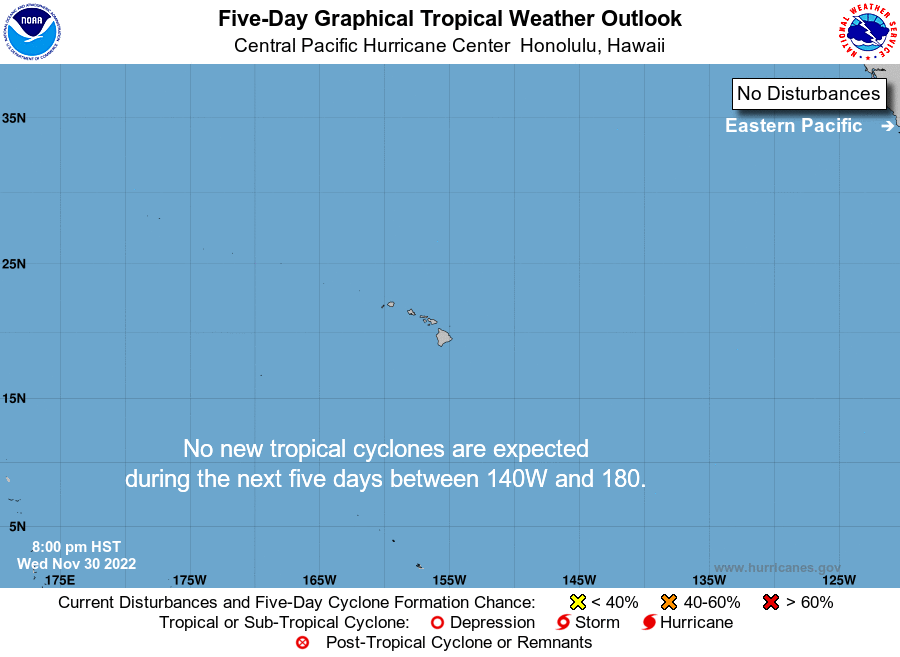 | 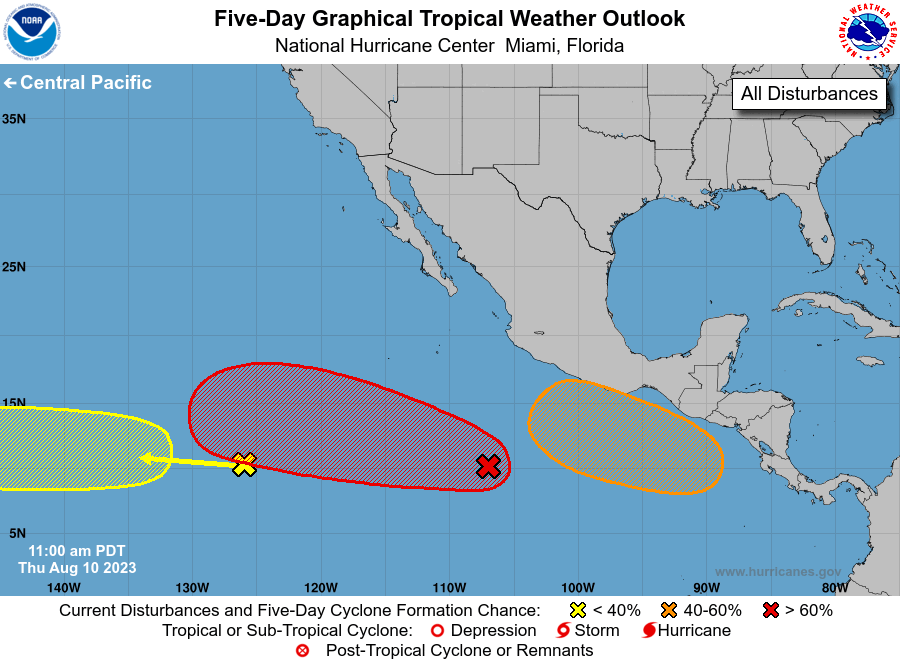 | 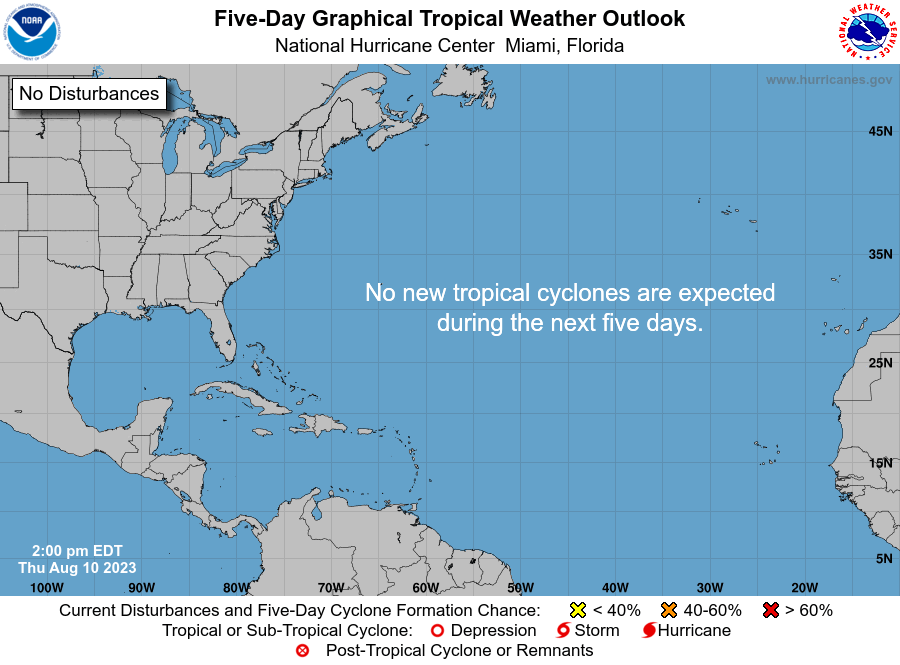 |

Updates on individual named storms can be obtained here.
And the Western Pacific
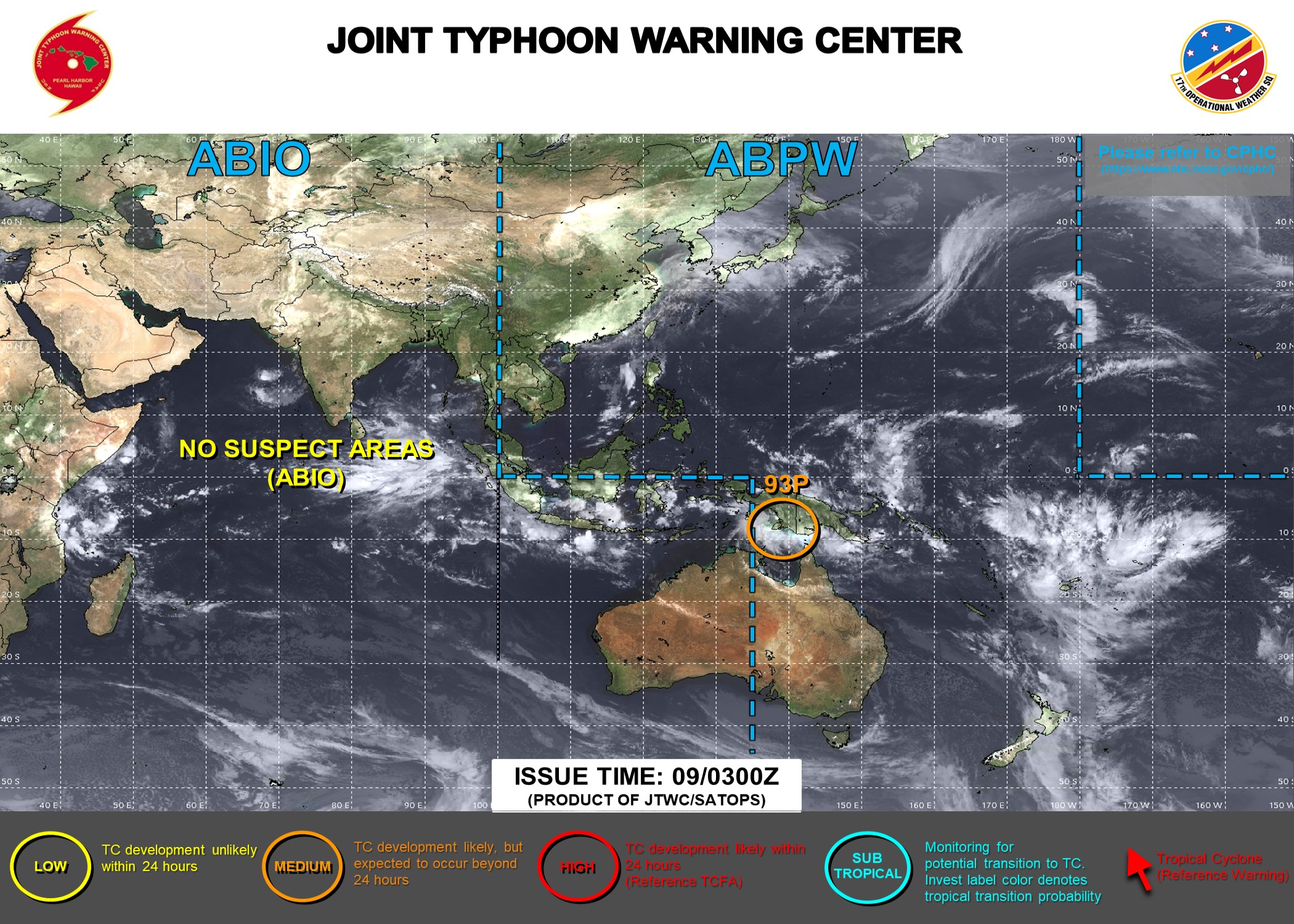
Week Tropical Forecast
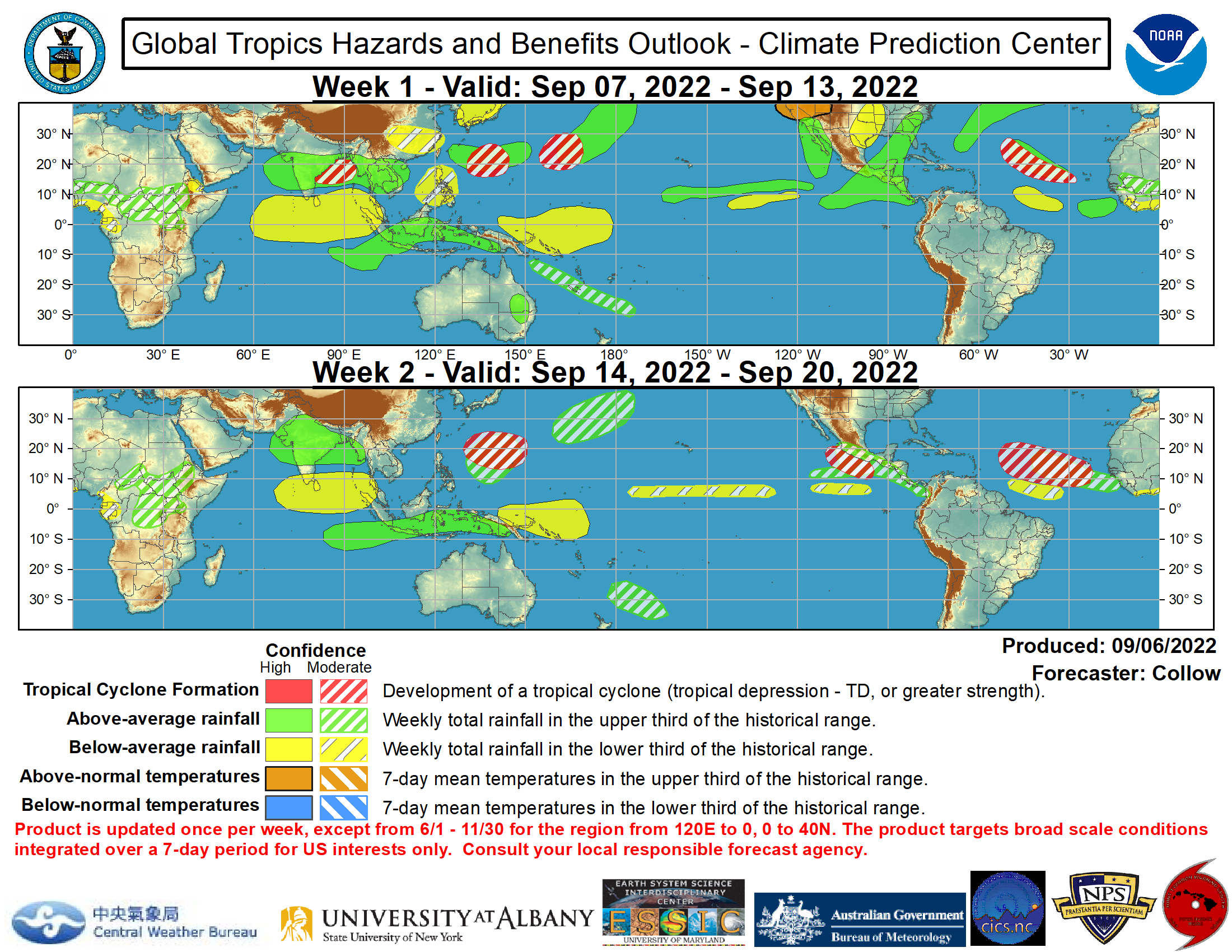
– Return to Directory
Intermediate-Term Weather Forecast
And shifting to the Alaska and CONUS Intermediate-Term Weather Forecast showing from left to right, Days 1- 5, 6 – 10, 8 – 14 and Weeks 3 – 4 You can click on these maps to have them enlarge, there are larger versions in the Addendum (More Weather the link is shown at the end of this section, and there are larger versions of these maps in the Addendum. Also, the discussions that go with these forecast maps can be found here (first two weeks) and here (Weeks 3 and 4).
First Temperature
And then Precipitation
For those interested in more detail, there are additional weather maps and information in the MORE WEATHER Addendum. The link to the Addendum is here. |
– Return to Directory
Mesoscale Events
The following map shows where mesoscale events are occurring or forecast. If you do not see any areas highlight on this map than there are no mesoscale events taking place or forecast. A mesoscale event is a very serious situation for a very small area and detailed information is provided for these events when they occur or are forecast. If a mesoscale event is shown, click on the map and more detail on the event will be shown.
Two different parts of the NWS issue this map and they are not always in agreement although they are pretty close. They (Norman Oklahoma and College Park Maryland) issue the alerts when they realize the need, so it is best to look on both maps and click one or both if you see areas highlighted.
This next map showing where “Headlines” have been issued for convection (and an animation of the recent movement of storms) should update and you should be able to click on to get additional details but if it does not update when you click on it, click here.
There is a slight difference between convection and thunderstorms. The below map shows where “Headlines” have been issued for Thunderstorms. You should be able to click on the map to get additional details but if it does not update, you can click here.
The map below shows the current wildfire risk which becomes more significant as we move into Summer. When you click on this image it takes you to the SPC Fire Warning Page and you get a set of maps for Days 1, 2, 3 – 8, etc. You can then click on those for more detailed information. The map is a bit blurry as I tried to make it a bit larger than the map provided by NOAA but should be able to see where the current wildfire risks are. But if you click on this map, you will get to see three maps that show the risk for different time periods.
– Return to Directory
Now the Day 3 – 7 Hazards Outlook Maps
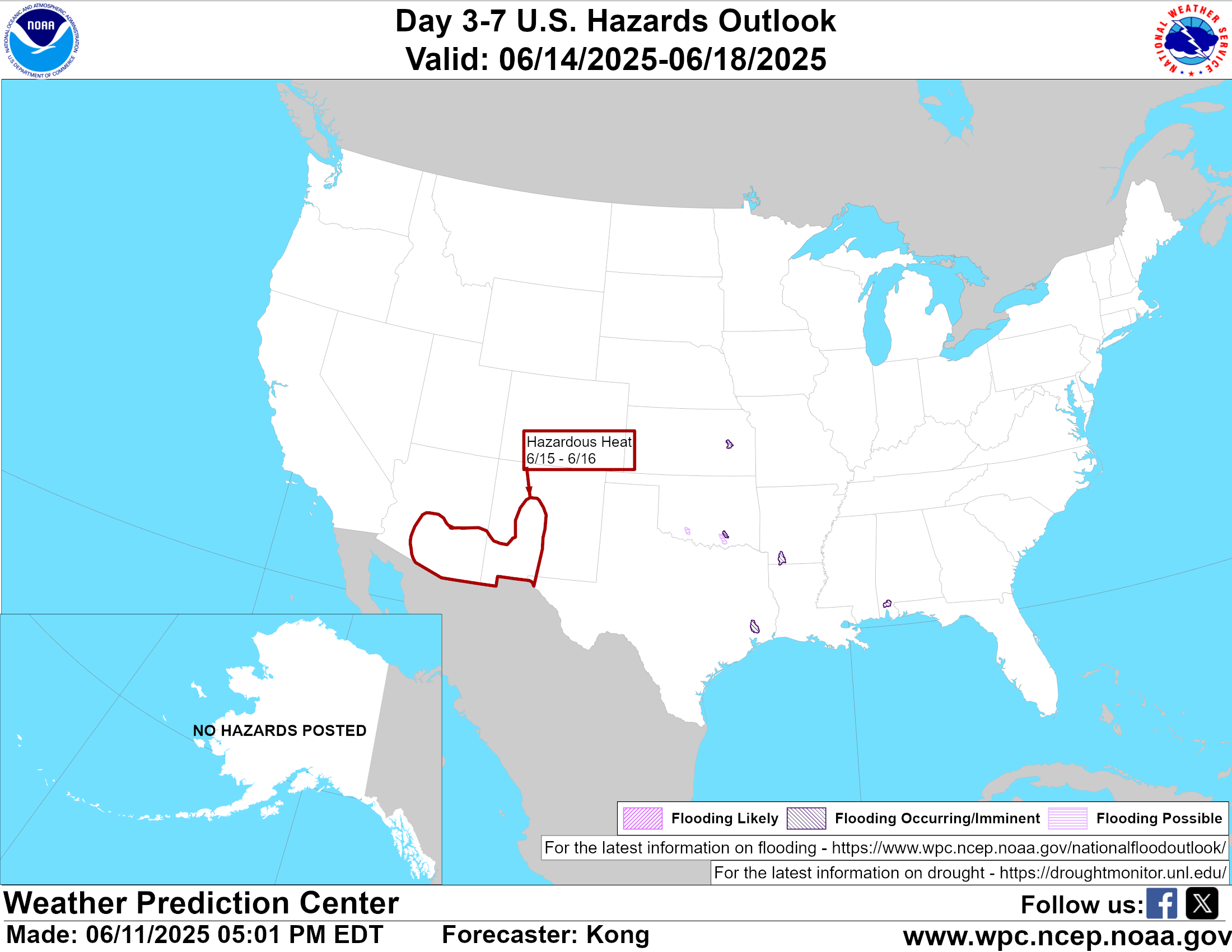
The orange and red outlined areas are what is most concerning of the forecasted Day 3 – 7 Hazards. This graphic does not update during the weekend. There is a discussion that goes with this graphic and you can access that discussion here.
The following is provided to help the reader relate the maps to how NWS will describe an area of the U.S.
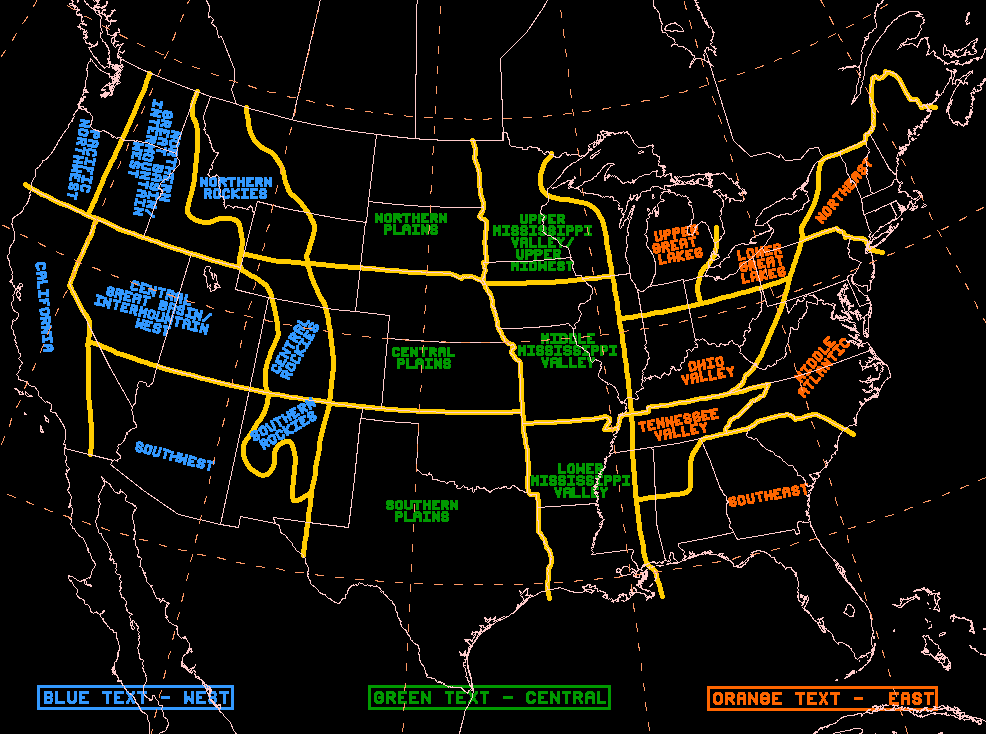
– Return to Directory
Now to our More Detailed Weather Report
This graphic is about Atmospheric Rivers i.e. thick concentrated movements of water moisture. More explanation on Atmospheric Rivers can be found by clicking here or if you want more theoretical information by clicking here. The idea is that we have now concluded that moisture often moves via narrow but deep channels in the atmosphere (especially when the source of the moisture is over water) rather than being very spread out. This raises the potential for extreme precipitation events.
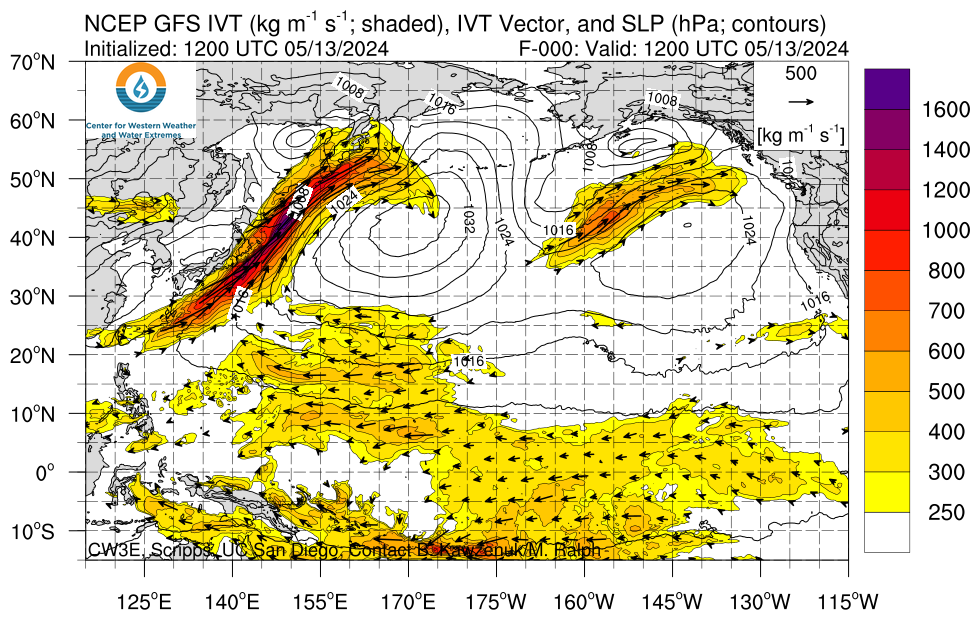
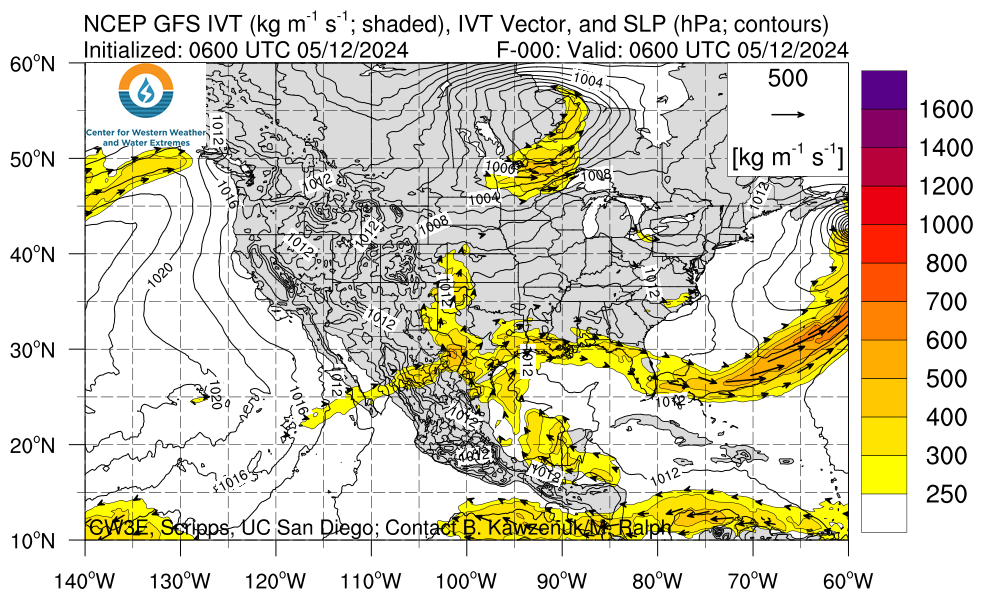
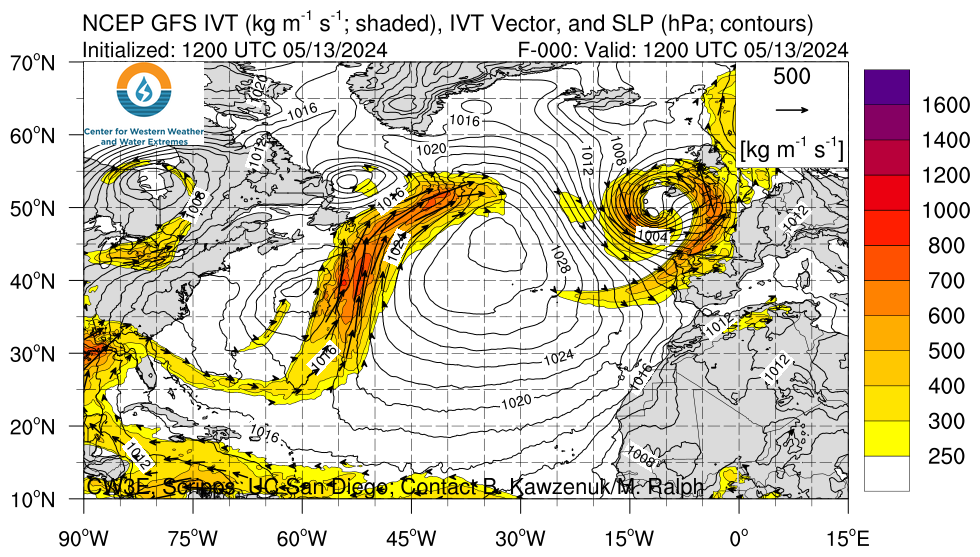
500 MB Mid-Atmosphere View
The map below is the mid-atmosphere 3-Day chart rather than the surface highs and lows and weather features. In some cases, it provides a clearer less confusing picture as it shows only the major pressure gradients. This graphic auto-updates so when you look at it you will see NOAA’s latest thinking. The speed at which these troughs and ridges travel across the nation will determine the timing of weather impacts. This graphic auto-updates I think every six hours and it changes a lot. Thinking about clockwise movements around High-Pressure Systems and counterclockwise movements around Low-Pressure Systems provides a lot of information.
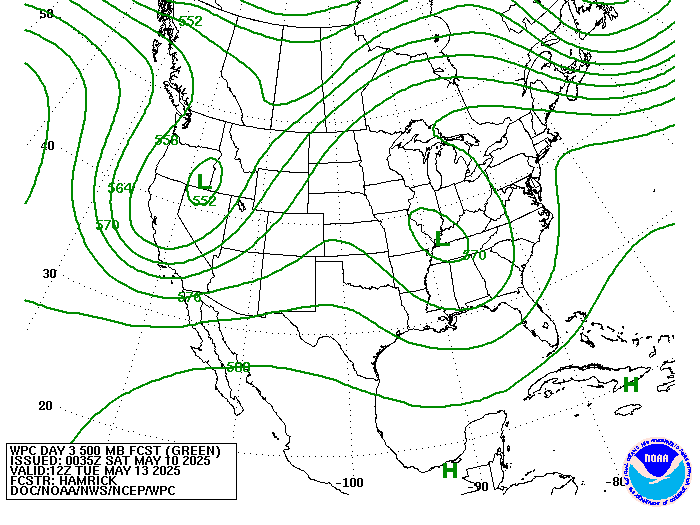
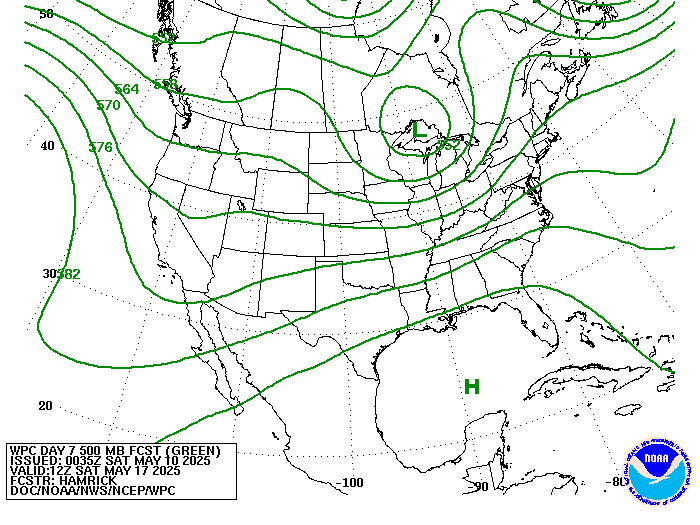
| Day 3 Above, 6 Below | Day 4 Above,7 Below | Day 5 Above. |
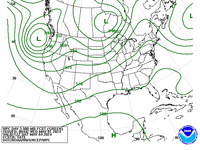 | 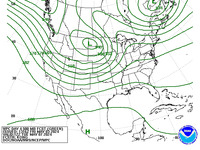 | 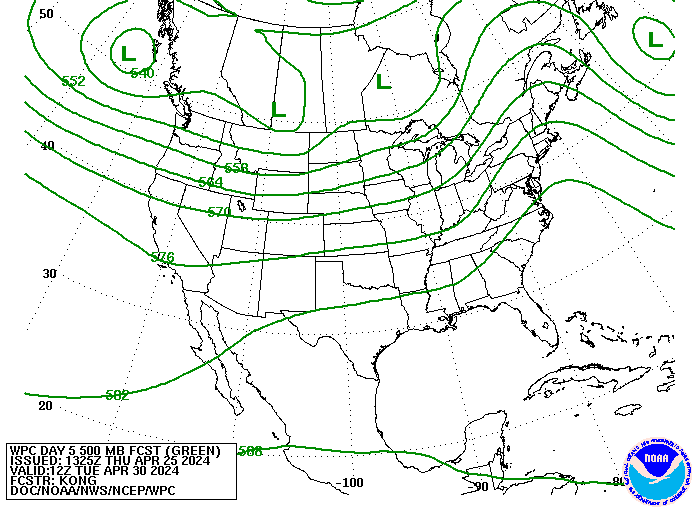 |
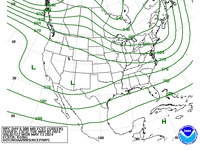 | 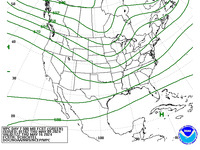 | 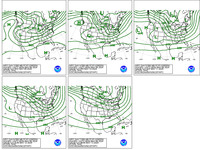 |
Here are the precipitation forecasts. First the cumulative for Days 1 – 3
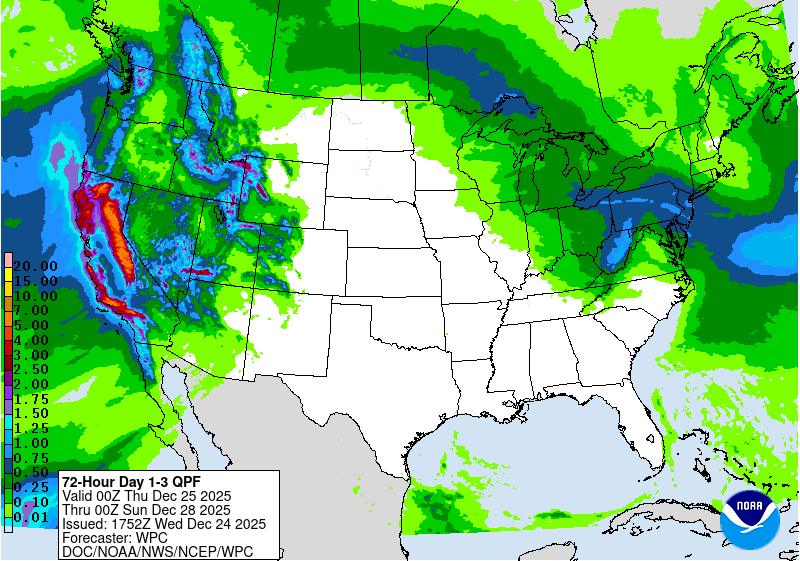
Then cumulative for Days 1 – 5
Then cumulative for Days 1 – 7
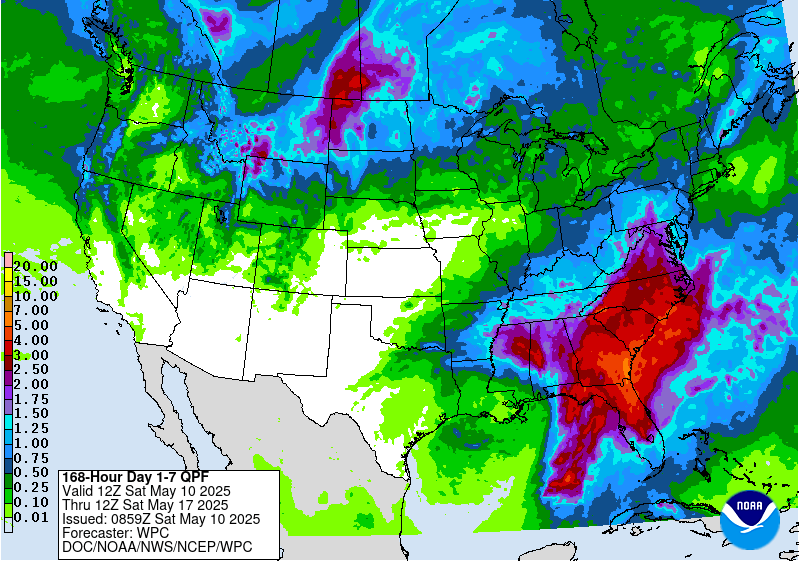
Now we look at the forecast for the Maximum Temperature three days out.
Looking ahead to next week.

– Return to Directory
Additional Tools to Obtain Watches and Warnings
| Current watches, warnings, and advisories issued by the agencies of the National Weather Service. Hazards should show up in the various maps but the below links will take you to all outstanding watches and warnings in each category which may include some categories not covered in the various maps or difficult to find. So if there is a category of interest, click on the appropriate link below. |
|
Below you will see a number of different maps that are updated in real-time, making this a “live” report. If a part of one or more of the maps shows an area that is highlighted, you can click on it and get the full current report. By having the reader click on these active situations rather than having GEI do so, you will not miss any events in which you might have an interest and which we had not noticed and the page will not get cluttered with warnings, etc that have since expired.
Our focus here is events that are likely to last in the range of six hours but there can be longer or shorter events that are addressed by the Storm Prediction Center which is the main source of the information in this article. Long-term major events like a Hurricane are more likely to be in a separate article. But that may not always be the case. Since in general, all the links on this page transfer you into the NOAA system, in order to get back into this article you need to either close the tab to which you were transferred or click back on the tab that has this article.
| Live Warning Maps which If Severe Weather is Shown can be Clicked on to get more detail about these events. If there is a current warning shown on the map, click on the map for additional information related to the event. | These maps are updated as risks are identified. |
| This is the current graphic showing any mesoscale discussions (MD’s) which are in effect over the contiguous United States. Please read the description of the purpose of our MD’s for further information. Details on all valid MD’s may be found on our Current Mesoscale Discussions page. |  |
| Convective Outlooks | |
|---|---|
| This is today’s forecast for organized severe thunderstorms over the contiguous United States. Please read the description of the risk categories for further information. You may find the latest Day 1 Outlook available as well as all Outlooks issued today online. | Today’s Outlook |
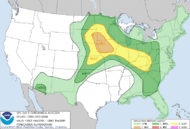 | |
| This is tomorrow’s forecast for organized severe thunderstorms over the contiguous United States. Please read the description of the risk categories for further information. The latest Day 2 Outlook is available as well as all Outlooks that have been issued today. | Tomorrow’s Outlook |
 | |
| This is the day after tomorrow’s (day 3) forecast for organized severe thunderstorms over the contiguous United States. Please read the description of the risk categories for further information. The latest Day 3 Outlook is available as well as all Outlooks that have been issued today. | Day 3 Outlook |
 | |
| This is the day 4-8 forecast for organized severe thunderstorms over the contiguous United States. The latest Day 4-8 Outlook is available as well as all Outlooks that have been issued today. Note: A severe weather area depicted in the Day 4-8 period indicates a 30% or higher probability for severe thunderstorms (e.g. a 30% chance that a severe thunderstorm will occur within 25 miles of any point). | Day 4-8 Outlook |
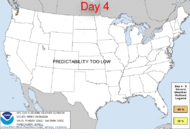 | |
| The Thunderstorm Outlooks depict the probability of thunderstorms across the contiguous United States in 4 or 8 hour time periods. The probabilistic forecast directly expresses the best estimate of a thunderstorm occurring within 12 miles of a point. The three probabilistic forecast thresholds are 10, 40, and 70 percent. | Thunderstorm Outlook |
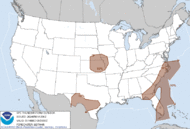 | |
| Fire Weather Outlooks | |
| This is today’s forecast for organized wildfires over the contiguous United States. Please read the description of the risk categories for further information about this product. | Today’s Outlook |
 | |
| This is tomorrow’s forecast for organized wildfires over the contiguous United States. Please read the description of the risk categories for further information about this product. | Tomorrow’s Outlook |
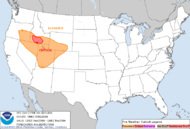 | |
| This is day 3-8 forecast for organized wildfires over the contiguous United States. Please read the description of the risk categories for further information about this product. | Day 3-8 Outlook |
 | |



